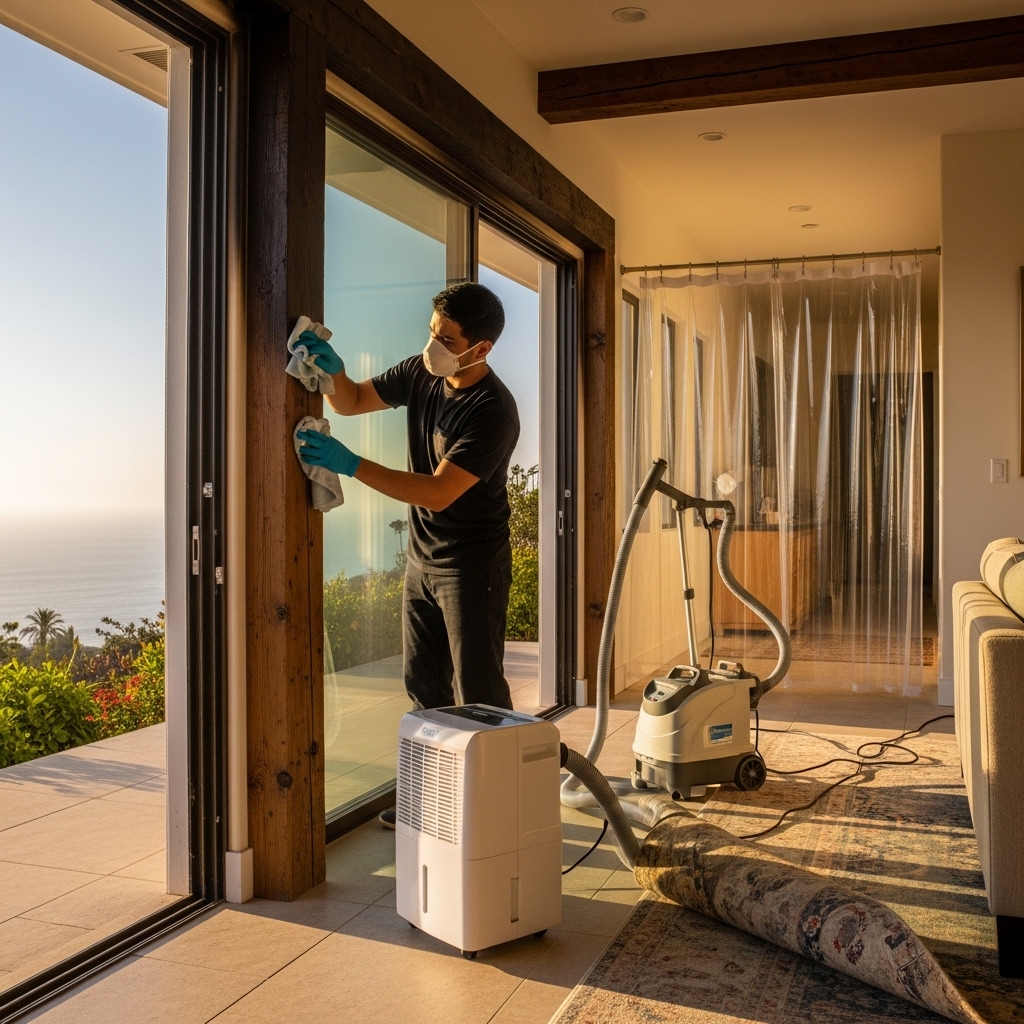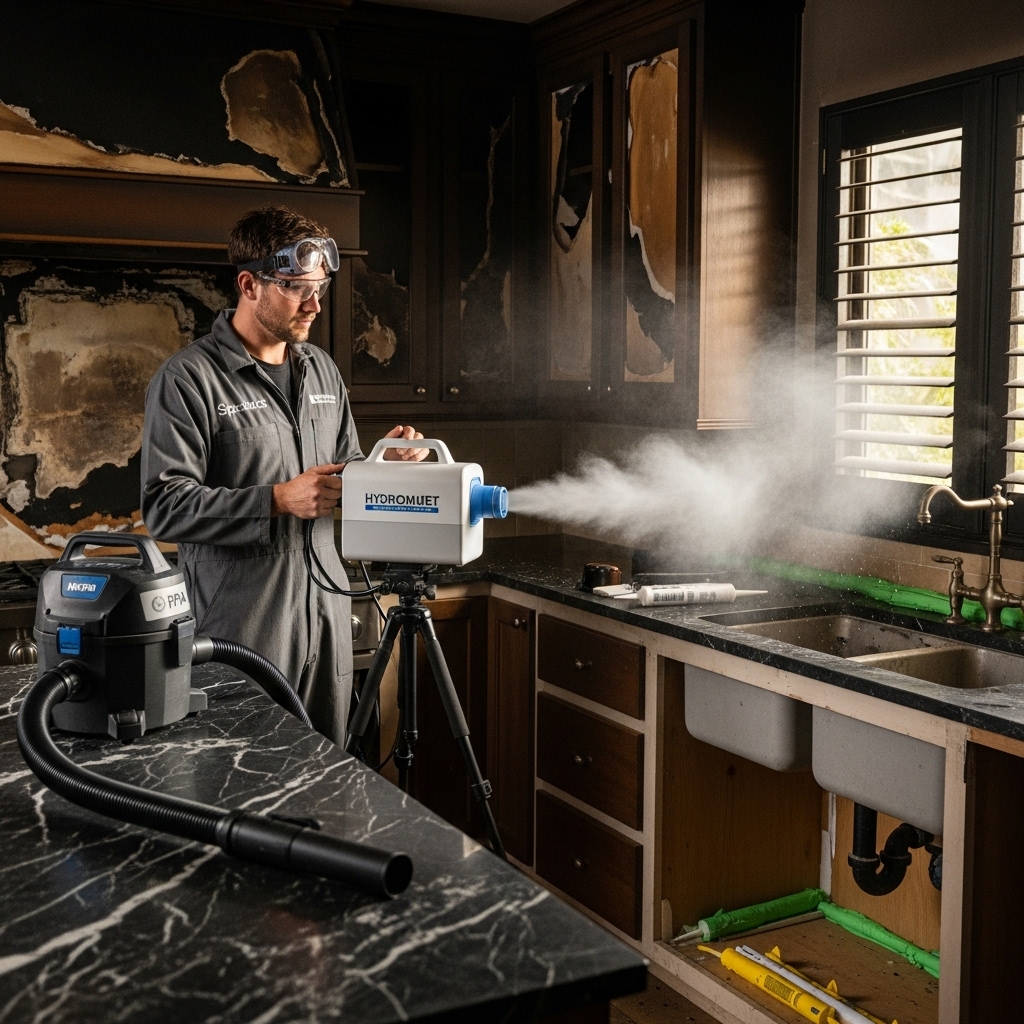For homeowners in Malibu, California, recovering from a fire means balancing immediate actions with long-term planning. You must protect your health, stabilize the property, remove water, clean soot, eliminate odors, and make repairs in a logical order. The guidance below explains these steps in plain language and highlights local factors like humidity and coastal weather that influence timing and technique. If you decide to seek expert help, understanding how professional fire damage restoration works will help you collaborate effectively and keep your project on track.
While every incident is unique, most restorations share common milestones: safety, documentation, drying, cleaning, deodorization, and rebuilding. By approaching the effort like a project—with goals, timelines, and checklists—you can reduce stress and avoid rework. This homeowner-focused guide aims to make each stage understandable and achievable.
It is normal to feel overwhelmed after a fire. The key is to start with simple, high-impact steps and build momentum. The earlier you begin moisture control and soot containment, the better your chances of saving materials and preventing secondary damage.
Ensure Safety First
Do not enter the home until authorities say it is safe. Once cleared, wear gloves, sturdy shoes, and a respirator suitable for particulates and odors. Be alert for weakened structures, tripping hazards, and exposed wiring. Keep children and pets away from affected areas. Limit the number of people entering to reduce cross-contamination.
- Shut off utilities and schedule inspections before reactivation.
- Board up broken windows and doors; tarp roof openings to protect against rain and wind.
- Use walk-off mats and protective coverings to keep soot from spreading.
- Ventilate when weather allows, but avoid running HVAC until inspected and filters replaced.
Document Everything
Thorough documentation supports claims and guides decisions. Take photos of every room and close-ups of damaged items. Start a written log of actions and observations. Create an inventory with descriptions and serial numbers where applicable. Keep all receipts related to temporary housing, supplies, and protective materials.
Extract Water and Control Moisture
Water used to extinguish the fire can soak walls, floors, and hidden cavities. Remove standing water with pumps and wet vacuums. Lift carpets and discard saturated padding. Pull baseboards to ventilate wall cavities if moisture is present. Use dehumidifiers and air movers in a balanced layout to speed drying. Track progress with moisture meters; in Malibu’s humid climate, expect to run equipment longer than you might elsewhere.
Clean Soot Without Spreading It
Soot can be fine, sticky, greasy, or protein-based depending on what burned. Start with HEPA vacuuming to remove loose particles from ceilings, walls, and horizontal surfaces. Use dry cleaning sponges on painted drywall and ceilings, replacing them as they load. Transition to wet cleaning for semi-gloss and gloss surfaces using appropriate cleaners—always test first. Limit moisture on porous materials to prevent swelling and staining.
Protect Indoor Air Quality
Odors and fine particles can linger. Replace HVAC filters and have the system inspected before use. Consider deodorization methods such as thermal fogging or hydroxyl generation after thorough cleaning. Ventilate when recommended and safe. Remember that odor control works best when the source residues are fully removed.
Handle Contents Methodically
Sort belongings into restore, evaluate, and discard categories. Photograph items before moving and label boxes by room. Non-porous items like glass and metal often clean well; porous items like unsealed wood and textiles require specialized care. Avoid powering on electronics exposed to smoke until they are evaluated.
Make Repairs in the Right Order
Once drying and cleaning are complete, address structural repairs and finishes. Replace compromised framing, wiring, and plumbing. Prime with smoke-blocking products before repainting. Confirm moisture levels meet manufacturer specifications before installing new flooring or cabinetry. Coordinate trades to avoid rework and keep the project moving.
When to Call Professionals
Large losses, heavy soot, and significant water intrusion are best handled with professional equipment and expertise. Teams with coastal experience understand Malibu’s humidity and building styles, helping them set realistic drying goals and choose the right materials. If you prefer a hybrid plan, discuss scope boundaries clearly. Learn what comprehensive fire damage restoration covers so you can decide which tasks you want help with and which you will handle yourself.
Insurance and Permitting Tips
Contact your insurer early. Ask about required documentation, preferred vendors, and coverage for temporary housing and storage. Keep detailed records and receipts. For major repairs, Malibu, California may require permits and inspections. Contractors familiar with local codes can streamline approvals and help schedule work efficiently.
Preventing Secondary Damage
Secondary issues like mold, rust, and odor rebound occur when drying or cleaning falls short. Keep dehumidifiers and air movers running until moisture targets are met. Reinspect spaces after several days, especially closets, cabinets, and behind appliances. Replace or deep-clean items that continue to emit smoke odors, and consider sealing exposed structural wood after cleaning.
Family Health and Comfort
Restoration can be disruptive. Set aside clean zones where the family can gather in comfort. Store frequently used items away from work areas. Plan for quiet hours and protect sleeping spaces from noise and dust. Communicate daily updates to reduce uncertainty and stress.
Preparing for the Future
Once restored, strengthen your home’s resilience. Install interconnected smoke alarms and test them monthly. Keep extinguishers accessible and learn to use them. Maintain electrical systems, clean dryer vents, and reduce clutter around heat sources. If you live near brush or trees, maintain defensible space and consider fire-resistant materials during repairs.
FAQs
Q: How quickly should I begin drying? A: Start as soon as entry is allowed. Rapid extraction and dehumidification reduce mold risk and speed restoration.
Q: Can I keep cleaning if odors persist? A: Persistent odors often mean residues remain. Revisit cleaning, consider additional deodorization, and evaluate HVAC components.
Q: What about important documents and photos? A: Air dry gently, separate pages, and consult specialists for valuable or fragile items.
Q: Will insurance cover all of my losses? A: Coverage varies by policy. Detailed documentation and communication with your adjuster help maximize eligible benefits.
Q: Is staying in the home during restoration safe? A: Some phases are compatible with occupancy, but demolition, heavy cleaning, and odor control may require temporary relocation for comfort and safety.
Take the Next Step Toward Recovery
With a clear plan and steady effort, you can restore a safe, welcoming home after a fire. Focus on safety, document thoroughly, dry completely, clean methodically, and coordinate repairs in sequence. If you want experienced guidance or extra hands, connect with local specialists in fire damage restoration who understand Malibu, California homes and are ready to help you move forward.


